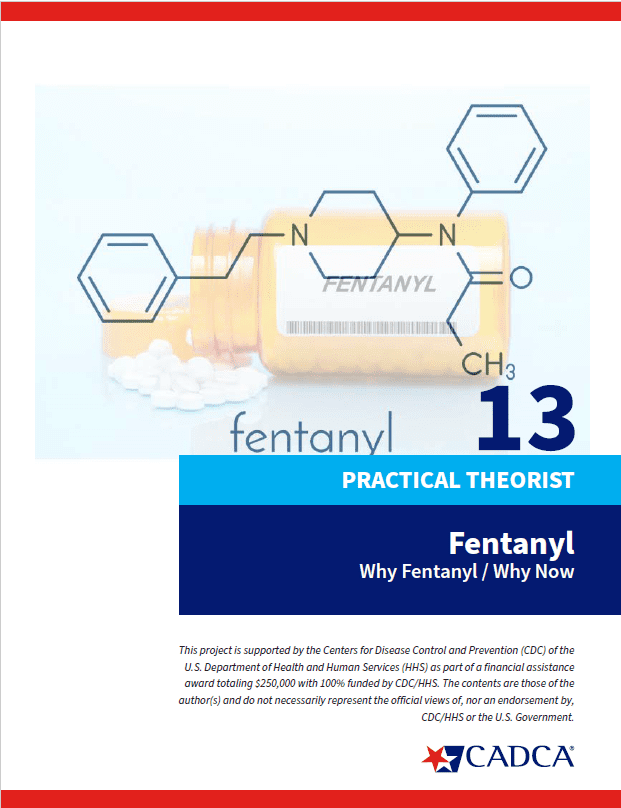Practical Theorist 13: Fentanyl: Why Fentanyl/Why Now
Dr. Albert Terrillion (CADCA), Dr. Grant Baldwin (CDC), and Ms. Merilee Fowler (MATFORCE and Community Counts) provided an overview of fentanyl- pharmaceutical and illicitly manufactured fentanyl (IMF)- and why it is one of the most dangerous substances circulating around the nation. The presenters focused on its effects on vulnerable populations, particularly youth, and discussed ways to implement different strategies (I.e., CADCA’s Seven Strategies for Community Change) to further improve prevention efforts.
Fentanyl is one of the most dangerous substances circulating in communities across America. It is a synthetic opioid that is up to 50 times stronger than heroin and 100 times stronger than morphine (DEA Fentanyl Factsheet, 2020). As little as 2mg of fentanyl – the equivalent of a few grains of salt – can be lethal, particularly for youth, young adults, or others who have not previously used fentanyl or other opioids (EMCDDA, 2011).
Significant increases in overdose deaths involving synthetic opioids, particularly illicitly manufactured fentanyl, began in 2013 (Gladden, Martinez & Seth, 2016; OʼDonnell, Gladden & Seth, 2016; OʼDonnell, Halpin, Mattson, Goldberger & Gladden; 2017). From 2013 to 2019 the mortality rate from fentanyl and other synthetic opioids jumped from 1.0 to 11.4 per 100,000 people – a 1,040% increase (Mattson, C. L., Tanz, L. J., Quinn, K., et. al., 2021). And since 2020, provisional data from the National Vital Statistics System has continued to document an increasing trend of overdose deaths (Ahmad, 2022), largely driven by synthetic opioids, such as fentanyl. It is estimated that by 2029, over 1.2 million people will die from fentanyl and other opioids if no action is taken (Rao, IJ., Humphreys K., Brandeau ML., 2021).
Recent trends in overdose deaths among young people involving fentanyl as well as individual stories of tragedy are drawing more attention to this issue for youth (Ahmad, 2022; Hoffman J., 2022). There are a number of reasons youth are at risk including, among others, a marketplace where drugs containing fentanyl are more available and accessible – including in counterfeit pills commonly available to youth and young adults via social media platforms (DEA Press Release, 2021); a lack of prior exposure to opioids, making drugs with even small amounts of fentanyl more likely to be lethal; a lack of awareness about fentanyl and its presence in other substances (Fentanylawarenessday.org, 2022); and the heightened need to address youth connectedness, resilience, and other protective factors, given the negative impacts of the COVID-19 pandemic on youth mental health (Jones SE., 2022). These factors make the need for primary prevention efforts more important than ever.
Given the urgency and magnitude of the opioid crisis, which is currently being driven by increases in the availability of highly lethal illicitly manufactured fentanyl, it is critical to focus on primary prevention and to be informed on other work to save lives. Focusing on primary prevention strategies, such as increasing awareness and promoting protective factors in schools and communities can help to enhance broader strategies being used to reverse increases in overdose deaths such as collaborative partnerships with public health/public safety; safe prescribing practices; access to substance use treatment and recovery programs; and promotion of services such as naloxone distribution, fentanyl test strips, and syringe services programs.




